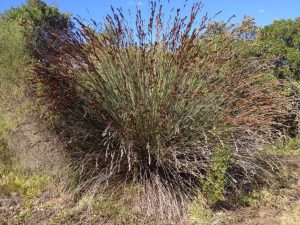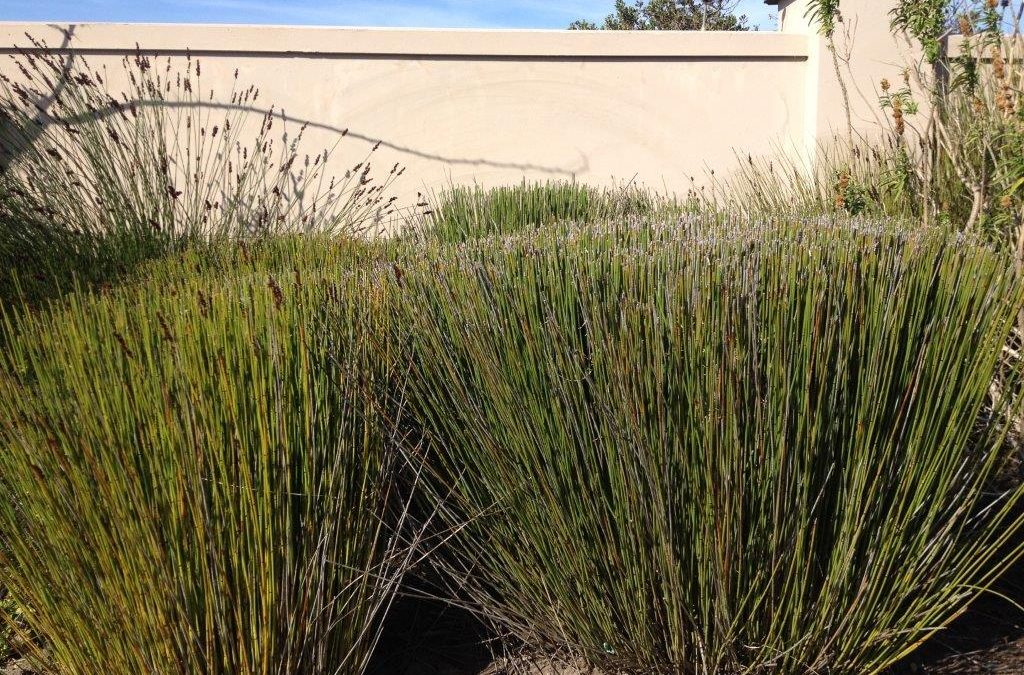Charles Reitz
Being a plant lover, I am disturbed to see the escalation of poor pruning of certain plant groups by garden services. The ‘neat and tidy’ idea of gardening often leads to a misperception of what is a beautiful. Restios, for example, have graceful, swaying stems with beige-brown flowering tips. As the plant grows it lays down its ‘hair’ of stems often resembling the locks of a veteran mermaid.
When a gardener feels the need to ‘lift’ the foliage off the ground, there is the option of pruning only that section that is lying down and any other old, dead stems down to the basal stem, thereby leaving the plant standing upright with its natural restio look intact. Noticeable in our coastal towns is the habit of ‘chopping’ the stems (culms) at mid-point to leave it with a vase-like appearance. The younger stems then grow and protrude through the cut-line only to be chopped again by the next visit of the garden service. This ultimately leads to the death of the specimen.
This sort of vegetation management probably stems from the human’s necessity to ‘control’ their environment, but in most cases it leaves our urban areas looking unfriendly to anyone who is in the frame of mind to notice. Pruning techniques and understanding the psychological effects of vegetation in the urban environment is a subject that has had little attention since the end of the French aristocracy… and it is obviously noticeable.
About restios
 Restio is the name of a group of plants within the Restionaceae, although many species formerly included in the Restio genus are now classified into a number of other genera.
Restio is the name of a group of plants within the Restionaceae, although many species formerly included in the Restio genus are now classified into a number of other genera.
In common with a number of other genera in the Restionaceae, restios are widely cultivated for use as garden ornamentals because of their attractive nodular foliage. Commonly known as rushes or thatching reed, hundreds of species grown worldwide are found in South Africa. In nature, restios grow in soils ranging from rocky to marshy, and most prefer acidic soil.
These plants have long stems like reeds or grasses, and are evergreen, mostly growing in the cooler seasons. Restios bear clusters of beige-brown flowers in spring and summer.
Most restios prefer damp soil, and a good mulch of organic material and compost will prevent water from evaporating too fast. Gardeners need to ensure that the soil is well-drained and that it doesn’t become waterlogged during the rainy season. Most restios prefer full sun, but some will grow well in light shaded areas.
Gardeners need to keep the plants tidy by pruning dead and damaged stems and not prune the entire ‘bush’ of stems to look like an army hairstyle!
Restios like the companionship of plants that enjoy full sun or light shade. But keep the height of your restios in mind, remembering that they occupy a large space. They enjoy good air circulation, so give them room to breathe.
General sources: Wikimedia, Fairlady-Home Ideas online.


Recent Comments